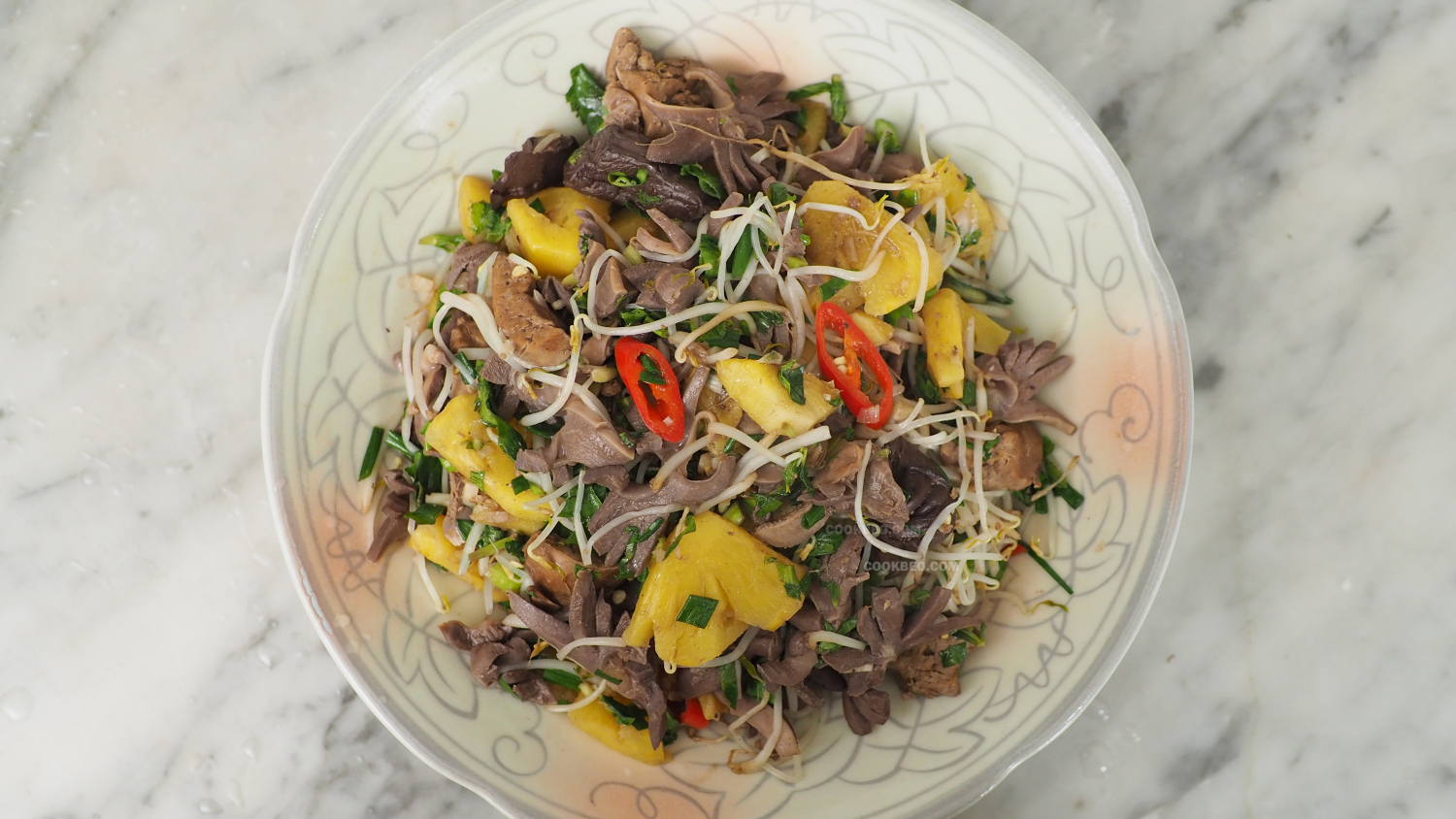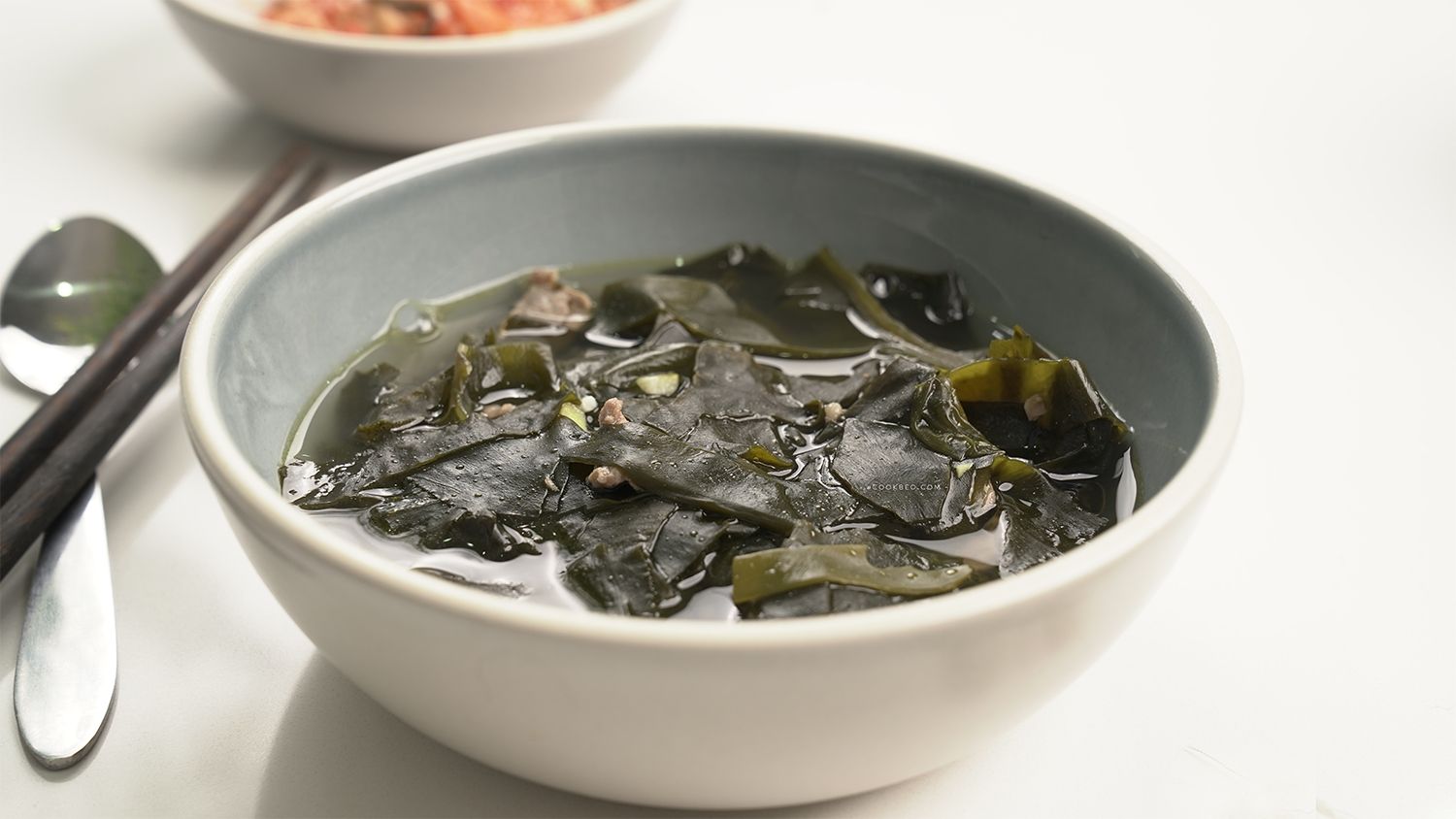How to Make Vietnamese Pickled Eggplant
This recipe for whole pickled eggplants uses white eggplants and a precise brine formula to ensure the pickles stay crisp, free from sogginess or mold, and have a balanced salty, sweet, sour, and spicy taste.
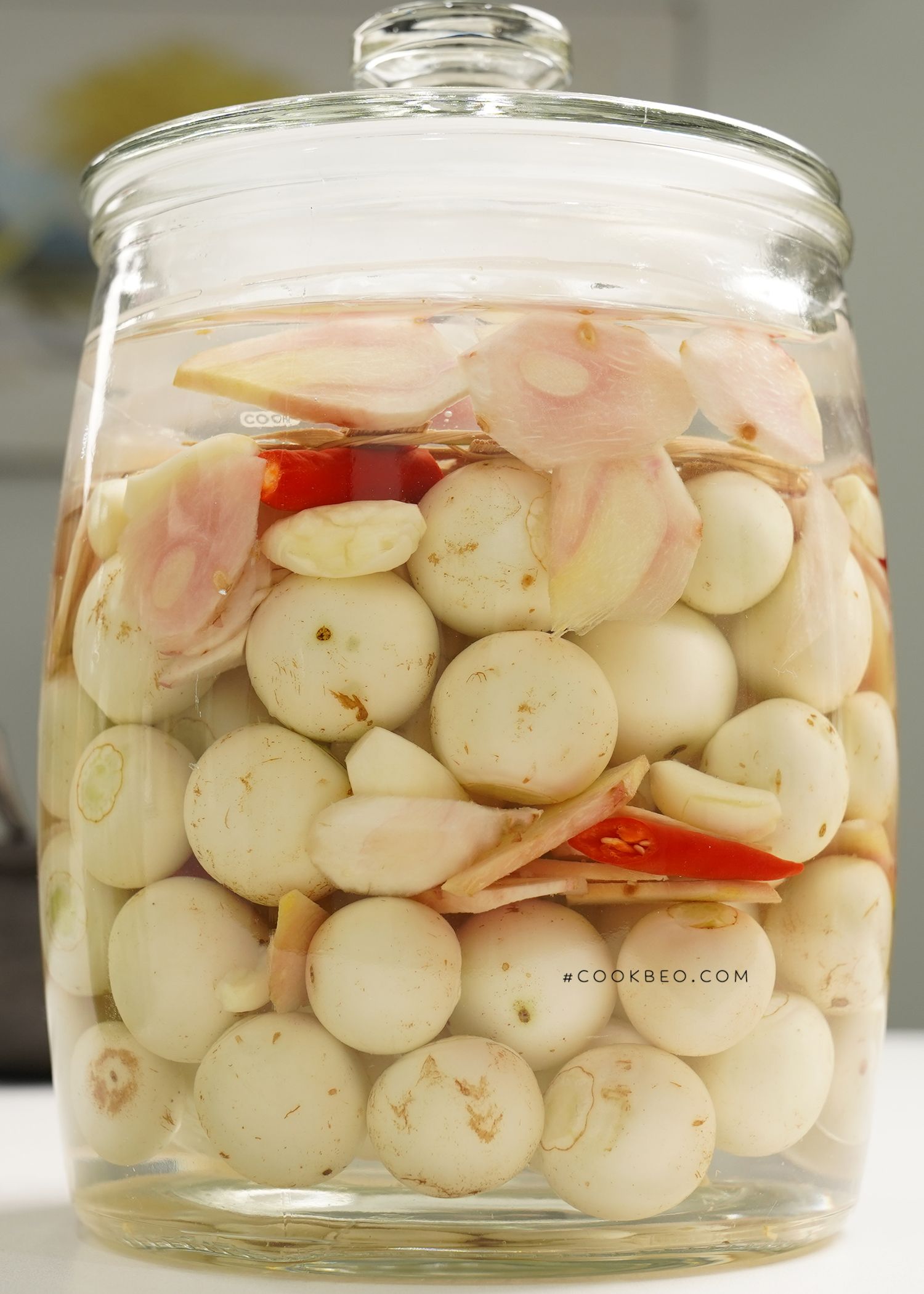
How to make pickled eggplant requires the perfect brine formula to ensure the eggplants stay crisp, white, and free from darkening or sogginess, and that the brine remains clear and free of slime. Additionally, achieving the characteristic aroma of pickled eggplant is not something everyone knows how to do.
Pickled eggplant is a traditional dish beloved by many in Vietnam. Depending on the region, there are different methods to suit local tastes.
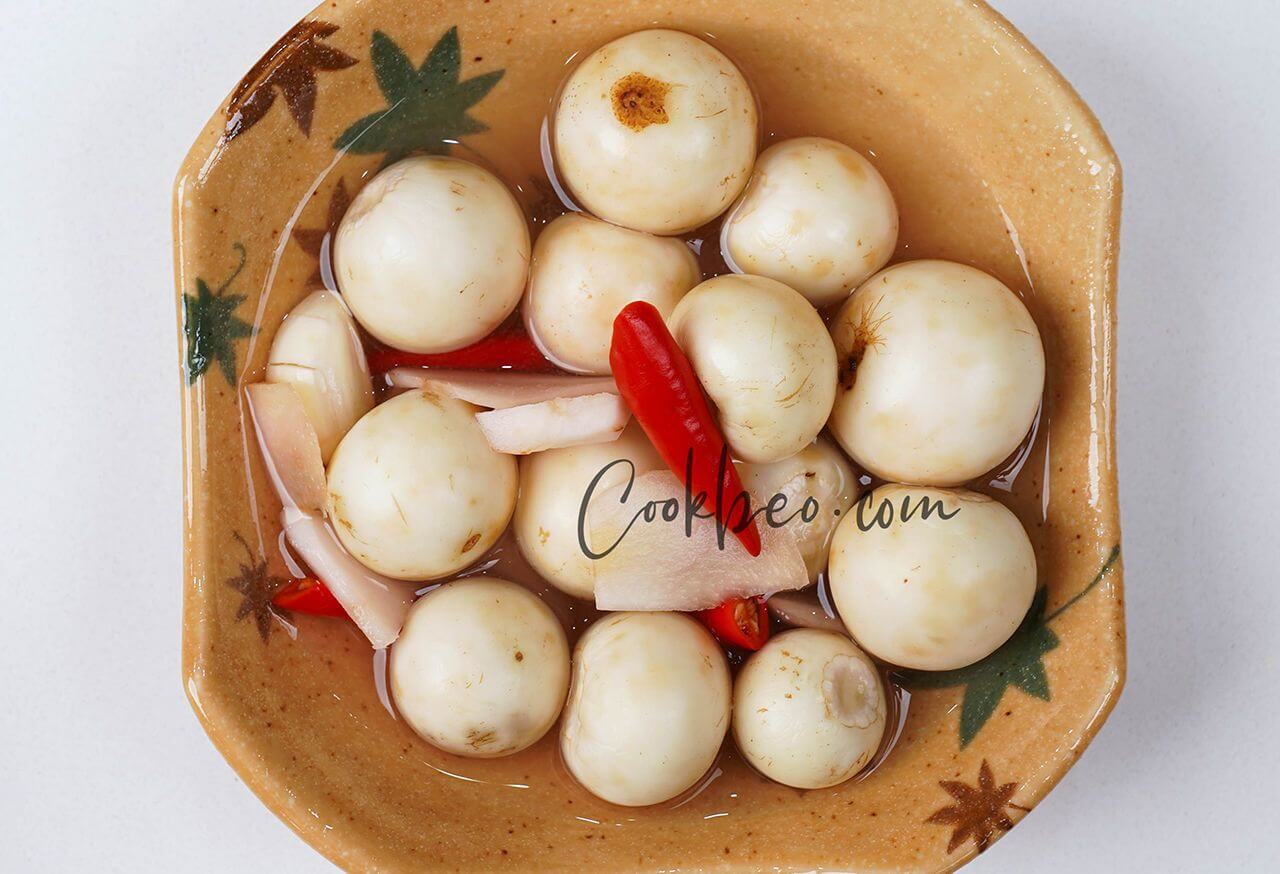
To make pickled eggplant, you can use either small white eggplants or larger green eggplants. The white variety is crunchier, though the green variety has fewer seeds. Choose based on your preference. Personally, I prefer the crunch of white eggplants.
The two most common methods are pressed pickled eggplant and quick pickled eggplant. The quick method is faster, allowing you to enjoy the pickles the same day, while the pressed method takes 2-3 days for the flavors to fully develop.
The key difference between these methods lies in the amount of salt used in the brine. The quick pickling method uses less salt and may include 1-2 tablespoons of rice vinegar to speed up fermentation. In this guide, Cookbeo will share a recipe for crunchy pressed pickled eggplant that you can easily follow.
Ingredients
- White eggplant: 1 kg
- Garlic: 2 bulbs (equivalent to 12-13 cloves)
- Galangal: 50-60g
- Fresh chili: 3-4
- Dried salt (or fine salt)
- Boiled and cooled water: 2 liters

Instructions
Prepare the Ingredients
Rinse the eggplants thoroughly to remove any dirt or mud from the surface. Let them drain.
Peel the garlic and lightly crush each clove without mincing. Simply crushing the garlic releases enough of its natural oils.
Peel the galangal, wash it, and slice it into thin pieces.
Remove the stems from the chilies, then cut them in half or leave them whole, depending on your preference.
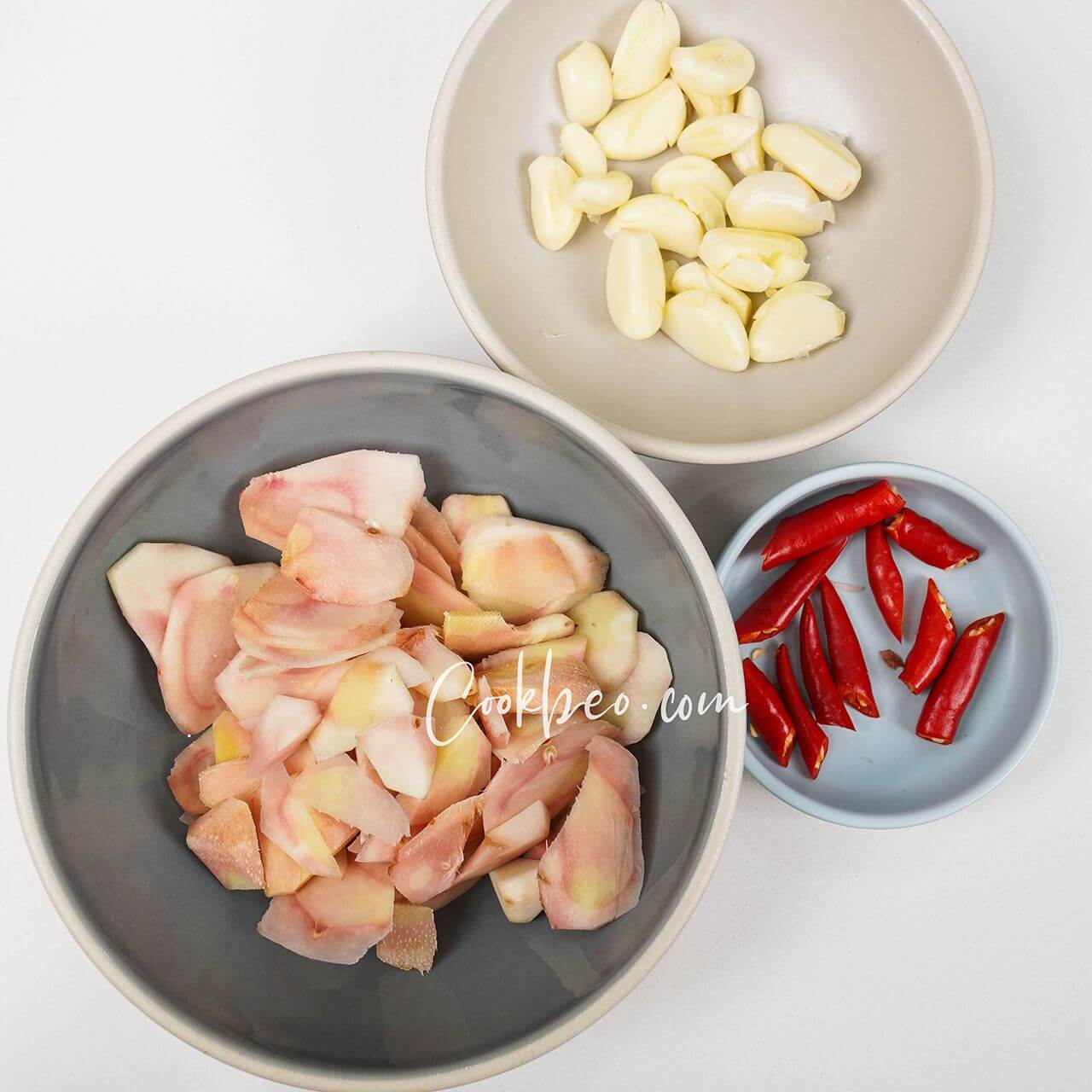
Pickle the Eggplant
Prepare a large bowl and add 1 liter of boiled and cooled water. Mix in 40g of dried salt and stir until the salt dissolves completely. Trim the stems off the eggplants and place them in the saltwater to prevent them from browning, disinfect them, and reduce their bitterness.
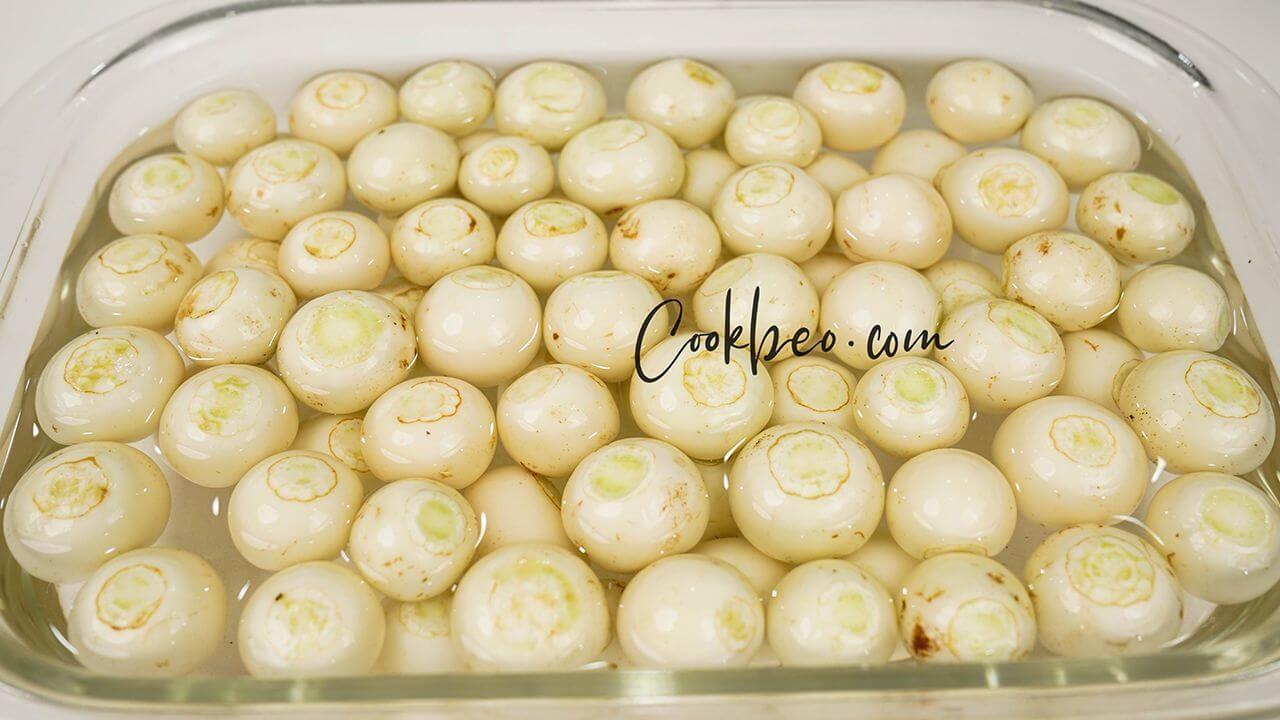
While the eggplants are soaking, prepare the pickling brine. To ensure the brine is clear, free from scum, and keeps the eggplants crisp and white, it is crucial to use clean, bacteria-free water. For 1 kg of eggplants, the brine ratio is 1 liter of boiled and cooled water, 40g of dried salt (about 4 tablespoons), and 10g of white sugar to encourage fermentation. Stir until the salt and sugar dissolve.
If you are using coarse or fine salt that contains impurities, boil the water with the salt according to the ratio above, then let it cool.
Prepare a glass jar or a ceramic pot to store the pickled eggplants. Glass or ceramic is preferred as it ensures better flavor and safety compared to plastic containers. Make sure the jar is clean and completely dry, as any moisture can cause mold or spoilage.

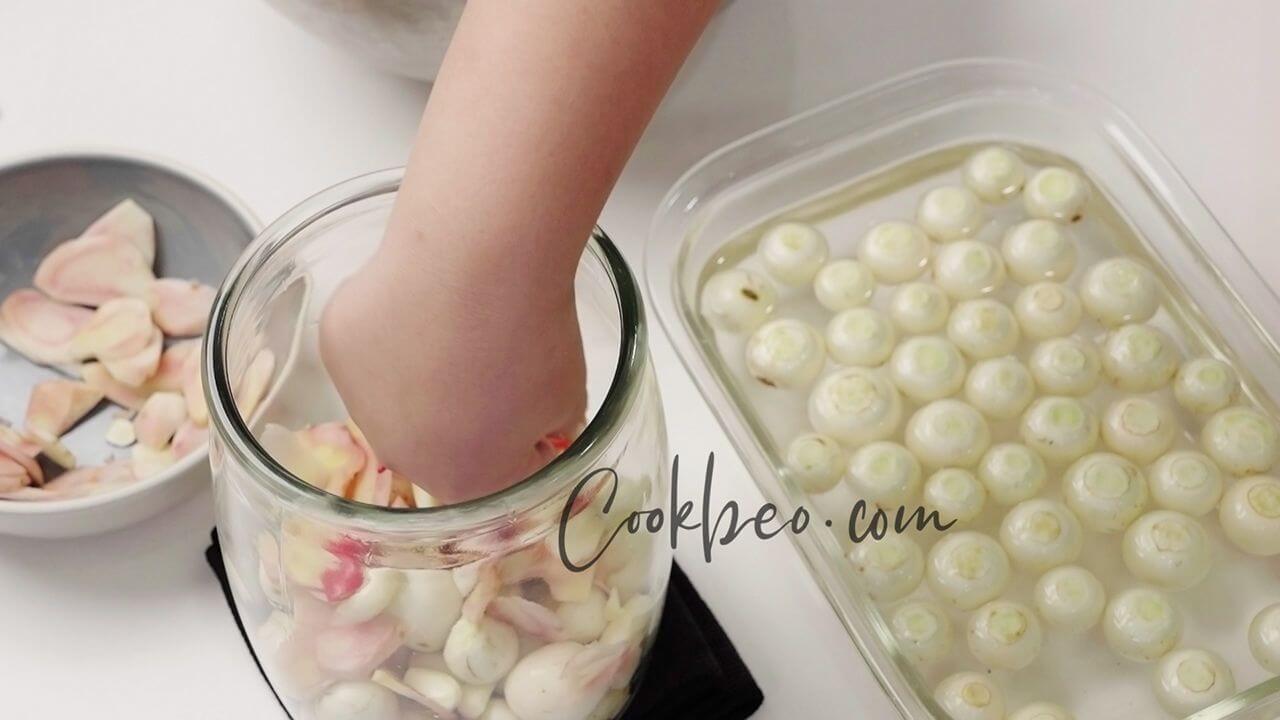
To properly pickle the eggplants, they must be fully submerged in the brine and pressed down firmly. After adding the brine, place a bamboo press or a weight on top to keep the eggplants submerged.
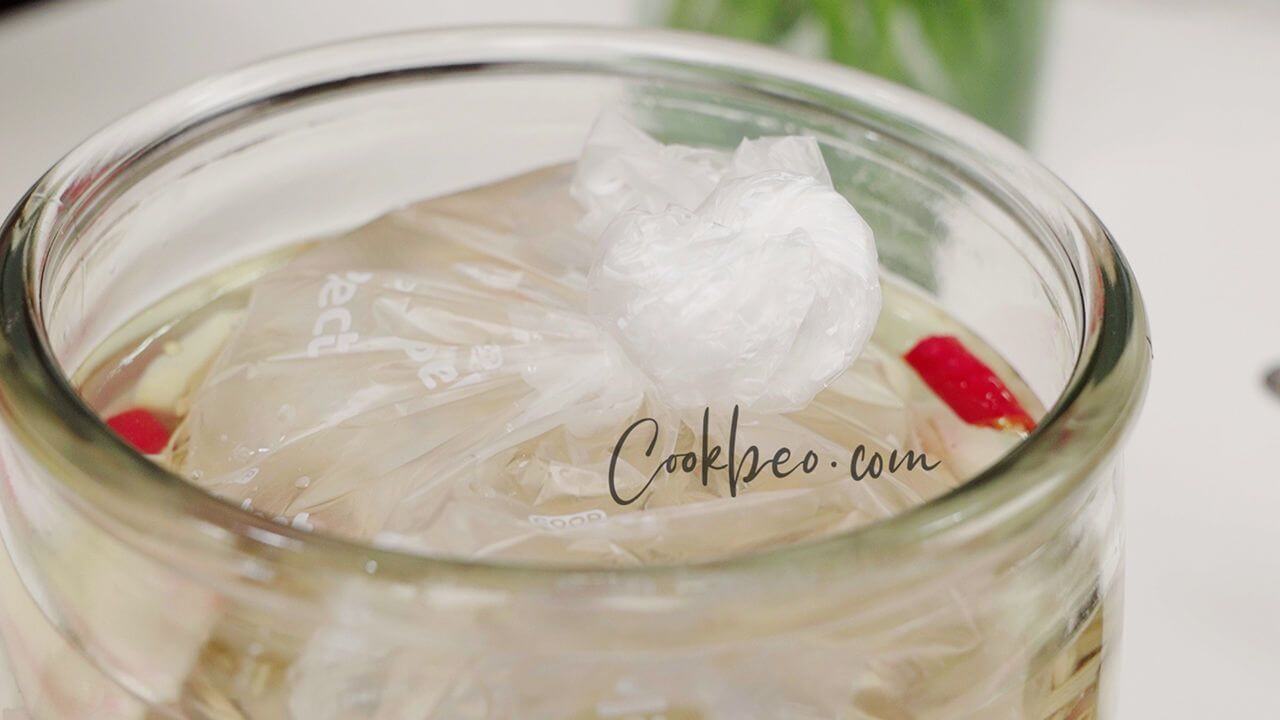
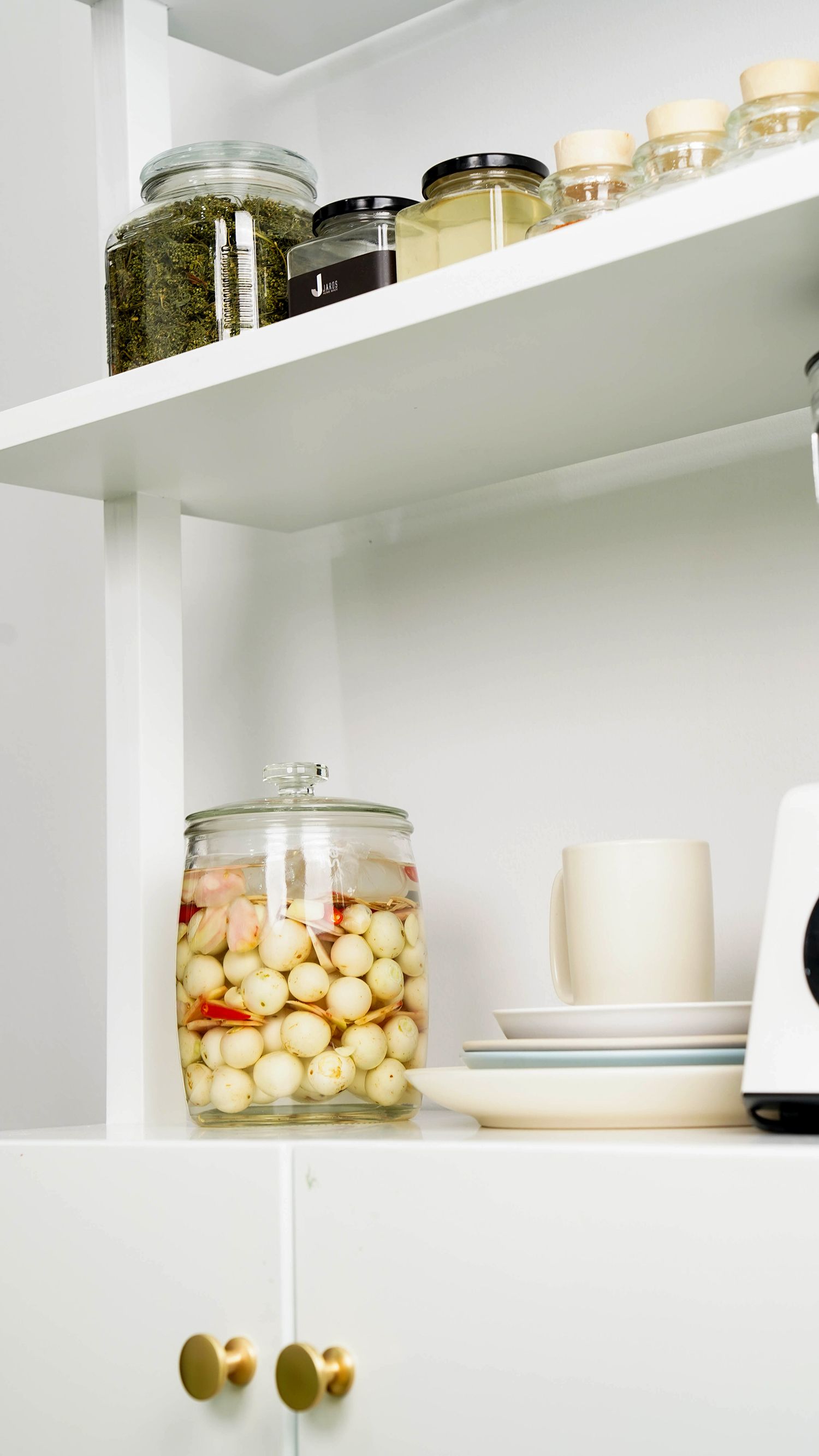
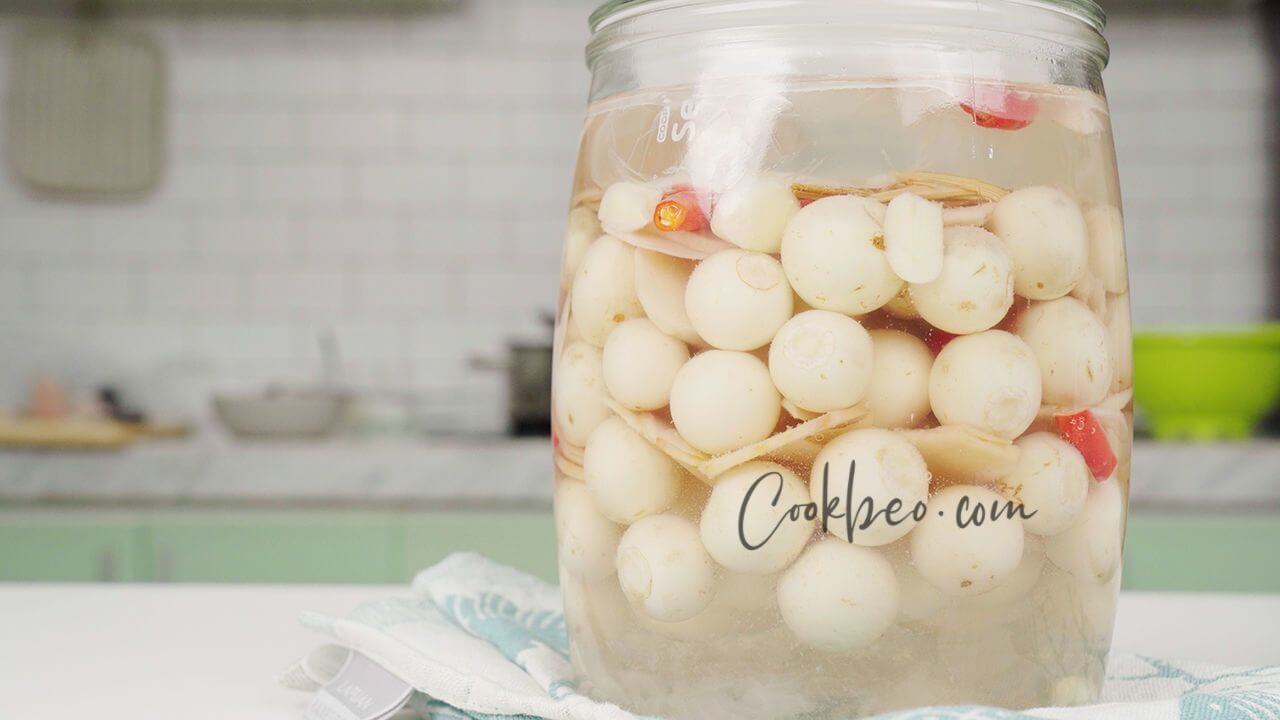
How to Enjoy
What to Eat with Pickled Eggplant
Pickled eggplant pairs particularly well with soups, especially light summer soups like crab soup with jute leaves, crab soup with malabar spinach and loofah, sour clam soup, or simple boiled water spinach. A meal with pickled eggplant can also be served with boiled pork and a dipping sauce of garlic and chili fish sauce, creating a simple but satisfying meal.
Cookbeo has shared how to make crunchy pickled eggplant, along with some important tips to ensure your pickles are white, crisp, and free from sogginess or mold. We hope you’ll try this recipe and enjoy a jar of homemade pickled eggplant alongside your favorite soups.
Tips & Notes
Be careful when selecting eggplants. Avoid any that are bruised or have insect damage. If you prefer to pickle eggplant slices, choose slightly larger ones, but if you want to pickle them whole, pick medium-sized, evenly sized eggplants. This ensures even fermentation.
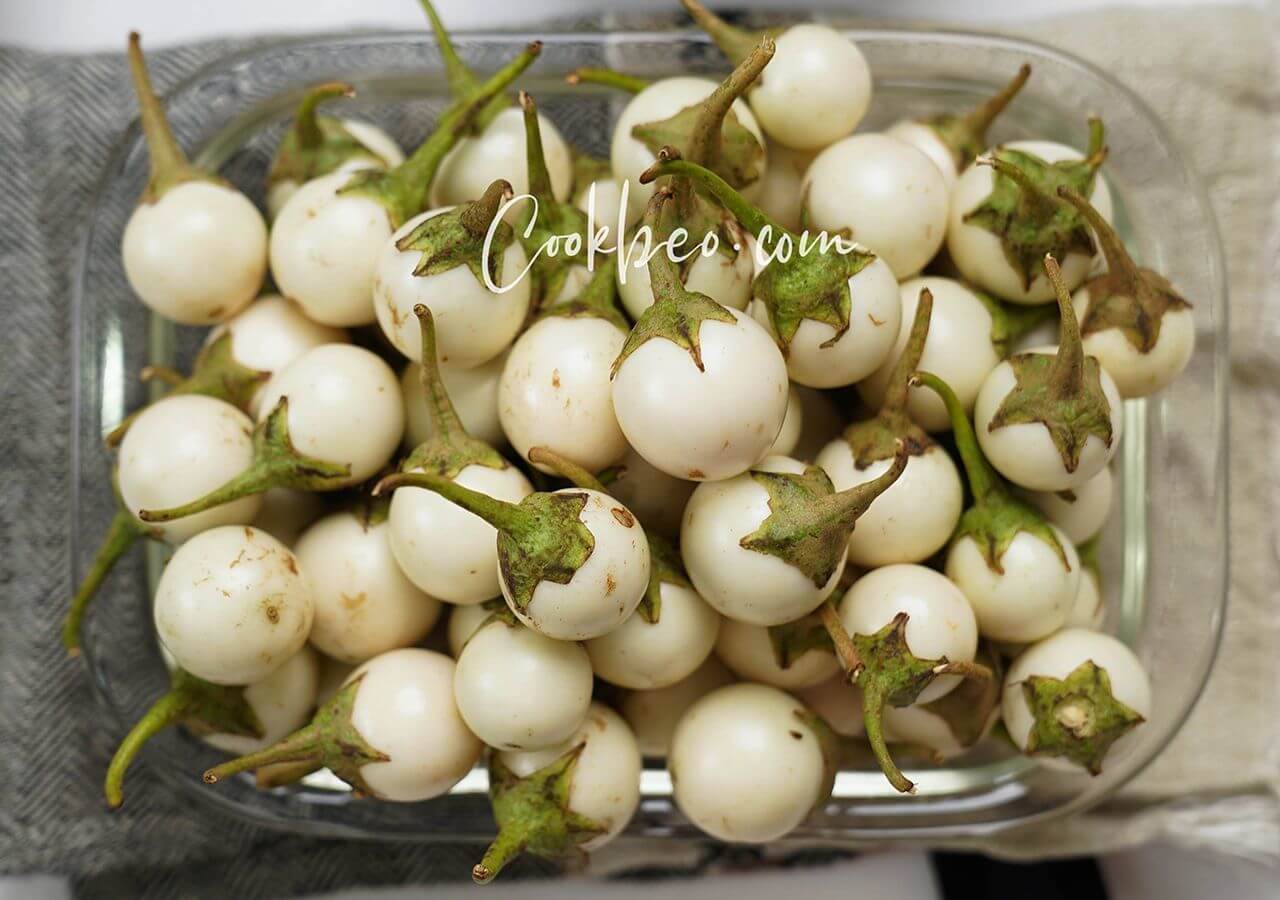
For the best results, use mid-aged galangal, which is not too young or too old, and has a pink hue and clear veins when sliced.
You can buy dried salt at the supermarket, which is processed and very clean. If you don’t have dried salt, you can use coarse or fine salt instead. However, if your salt is not clean or dry, you should boil it in water, then let it cool before mixing it into the brine, instead of using it directly as in my recipe.
Additional Information
Things to Keep in Mind When Eating Pickled Eggplant
Pickled eggplant is a popular side dish that pairs well with many meals, especially with soups like crab soup, vegetable soup, or sour clam soup.
According to traditional medicine, while eggplant has medicinal properties that can treat conditions like stomach pain, inflammation, and constipation, raw eggplant contains the toxin solanine, which can cause nervous system and digestive issues like headaches, dizziness, nausea, coughing, and joint pain. Additionally, raw eggplant contains harmful alkaloids, so if you taste bitterness in eggplant, it’s best to discard it to avoid health risks.
Because of this, while pickled eggplant is delicious, scientists recommend not eating too much under-fermented eggplant, especially quick pickled eggplant.
If you see white mold on the pickles, don’t hesitate to throw them away. This indicates the eggplant has over-fermented, leading to the formation of harmful toxins.
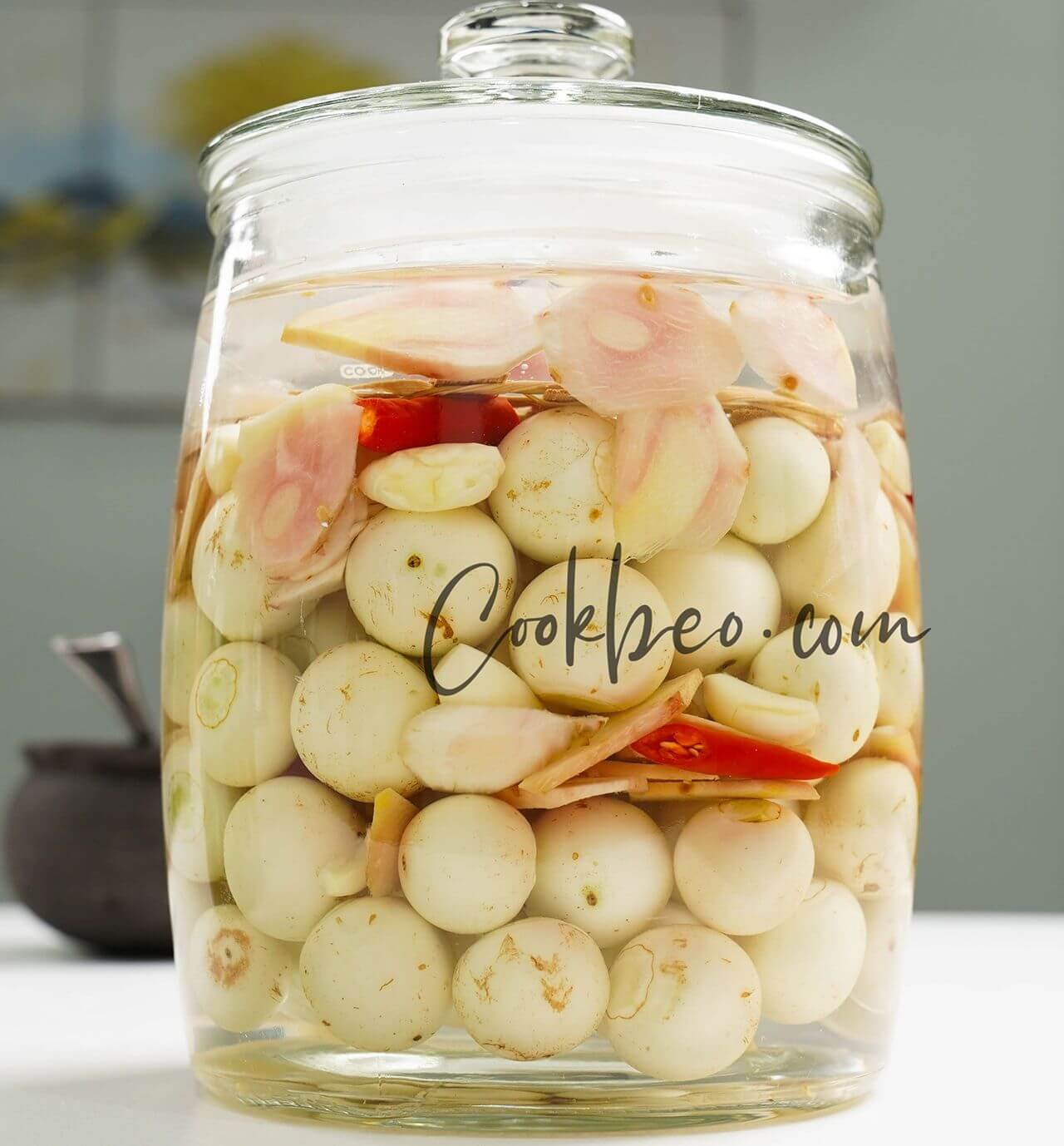
For longer-lasting pickles, use a saltier brine, which slows bacterial growth and allows for longer storage.




